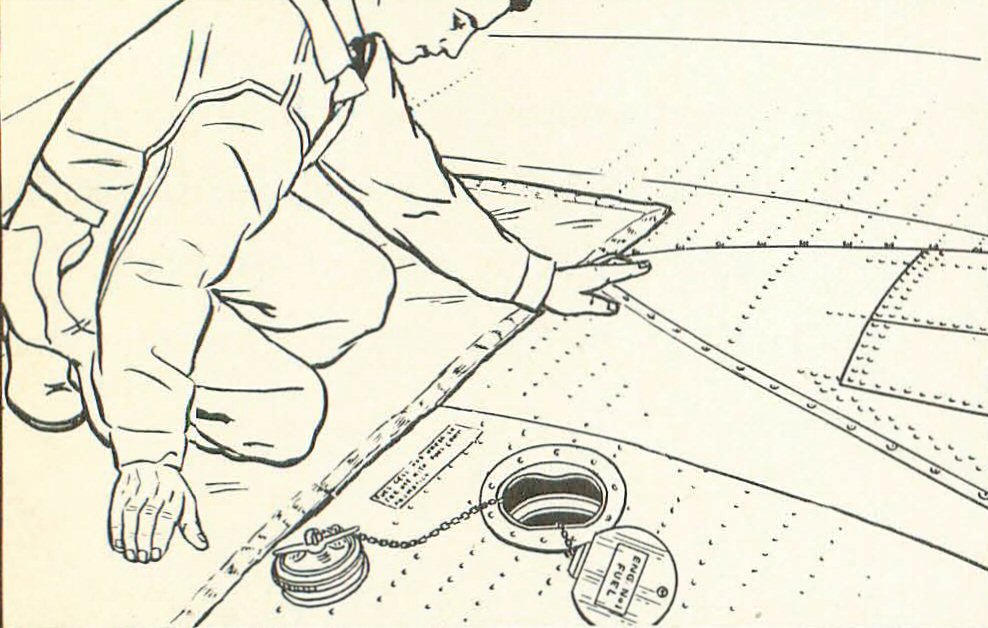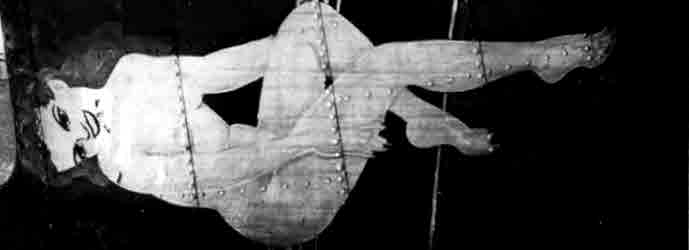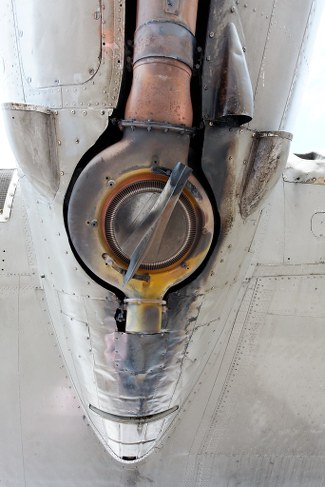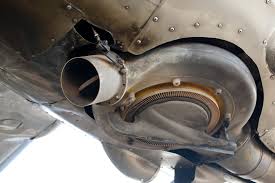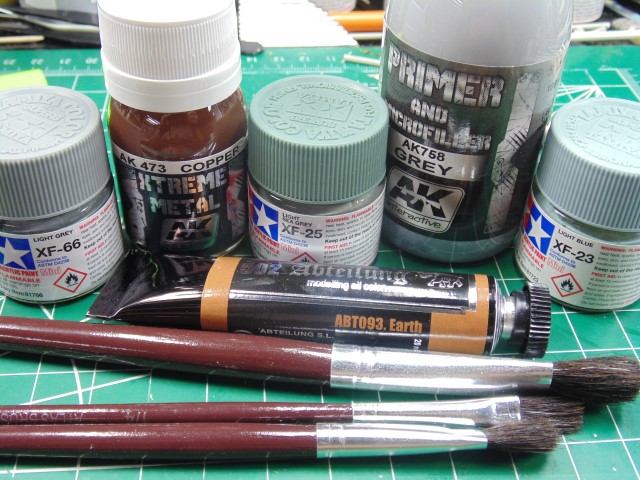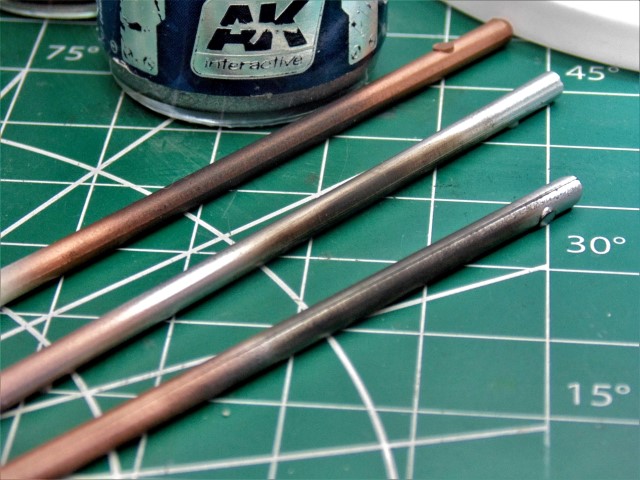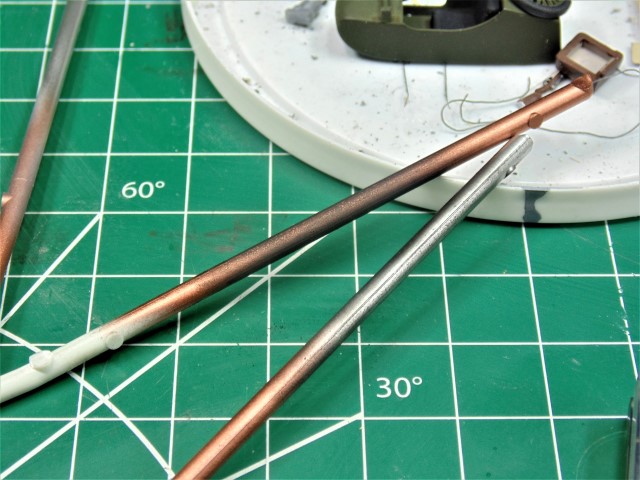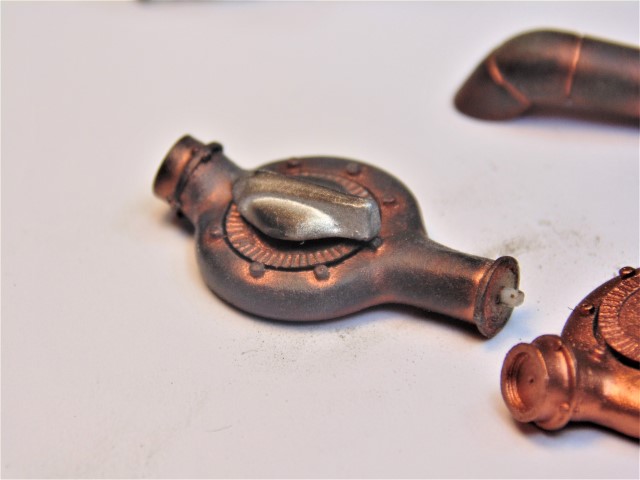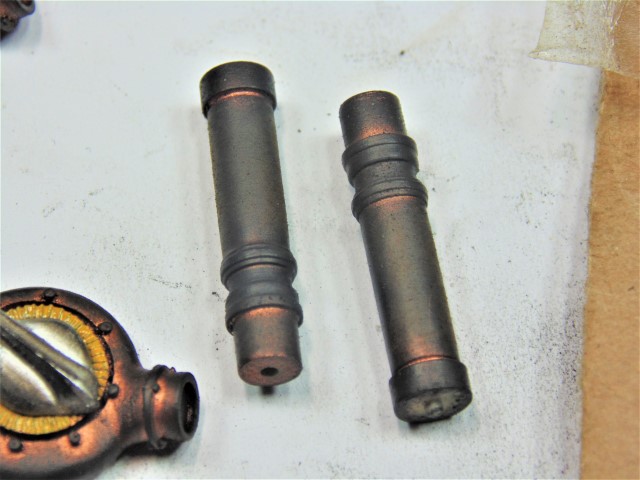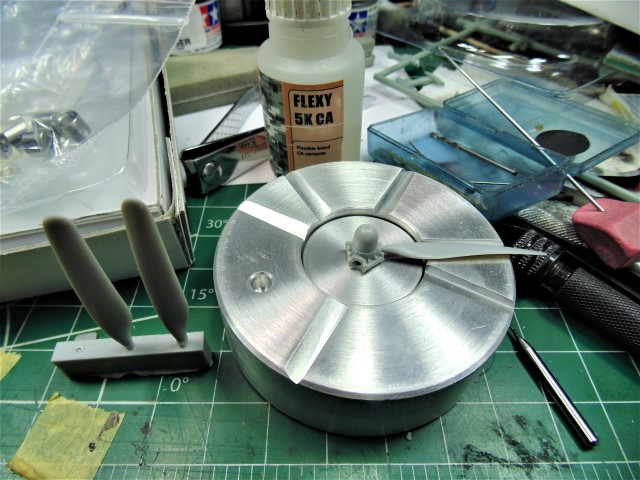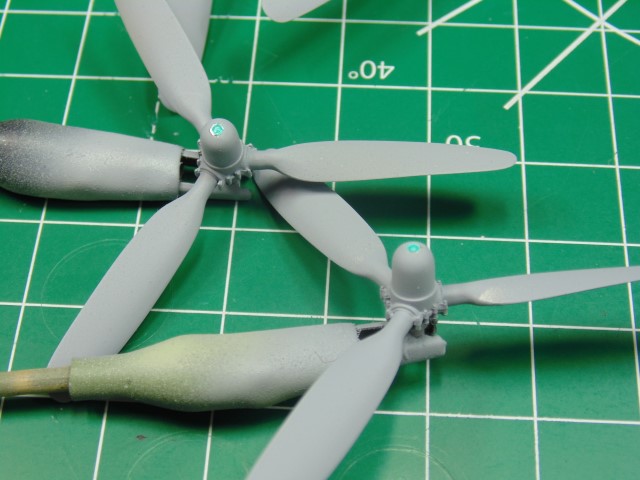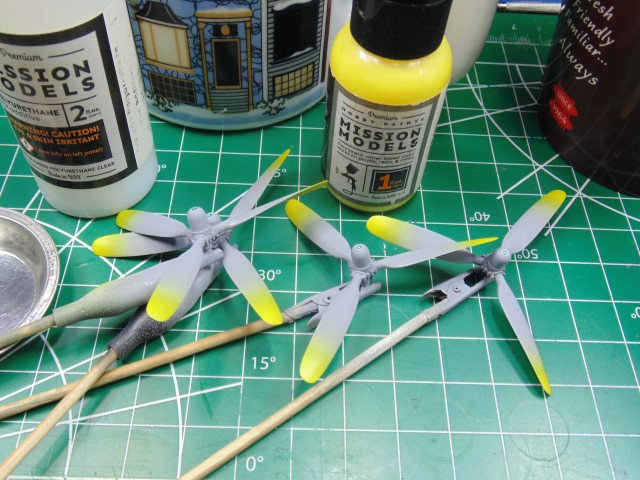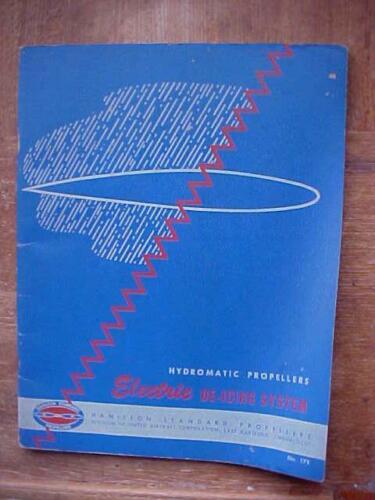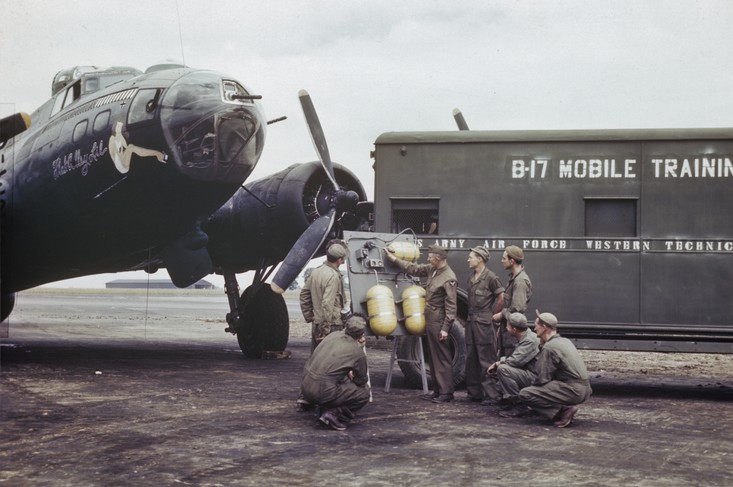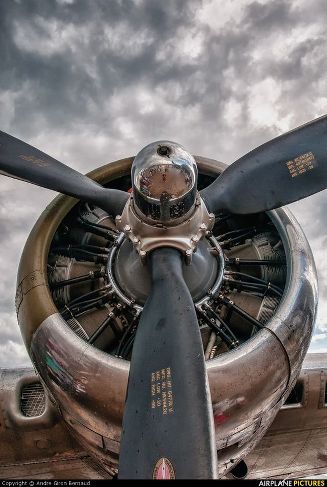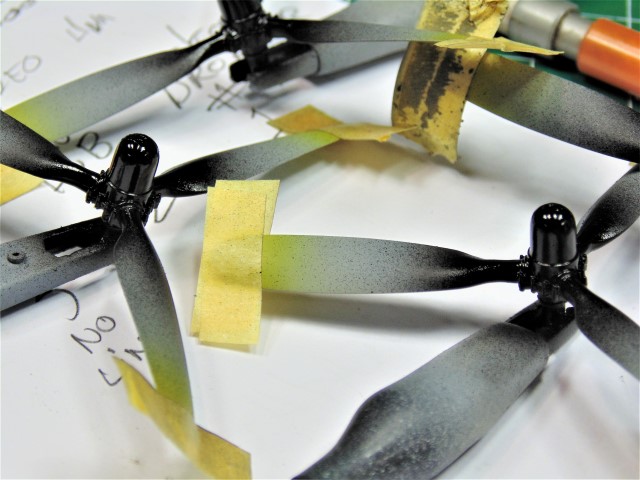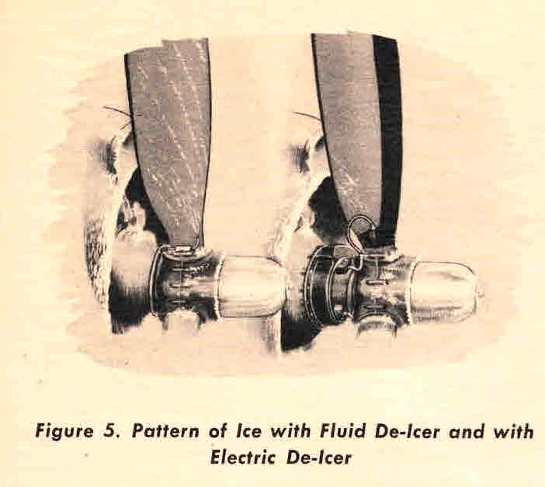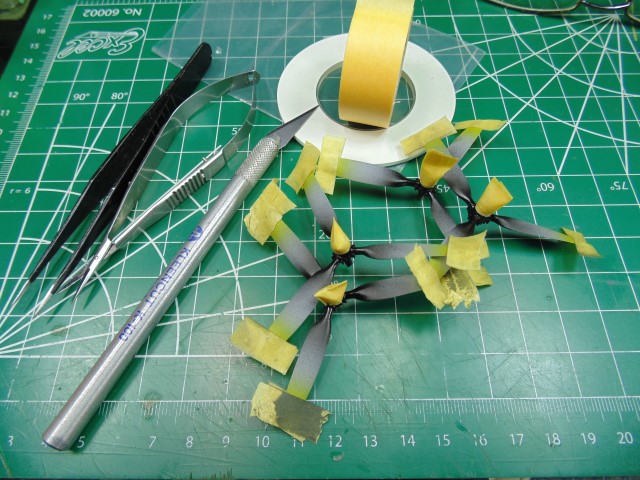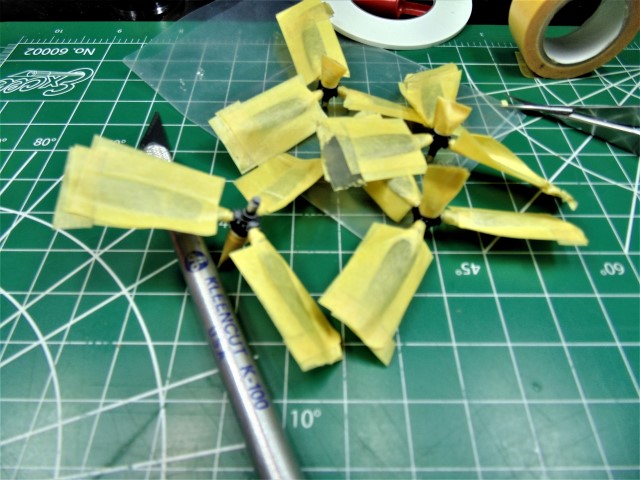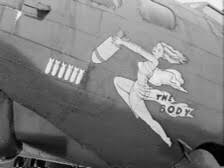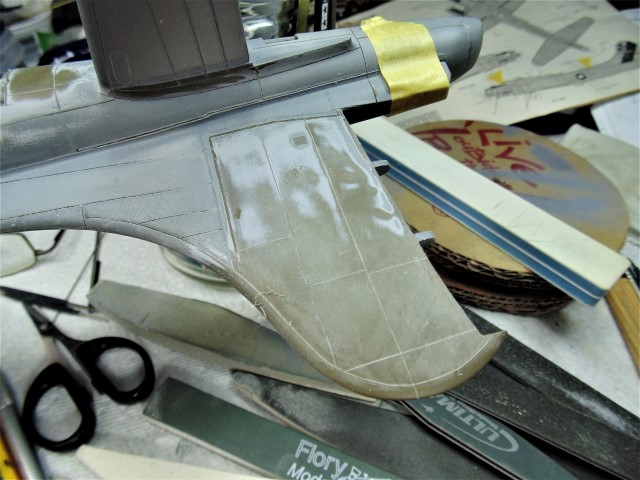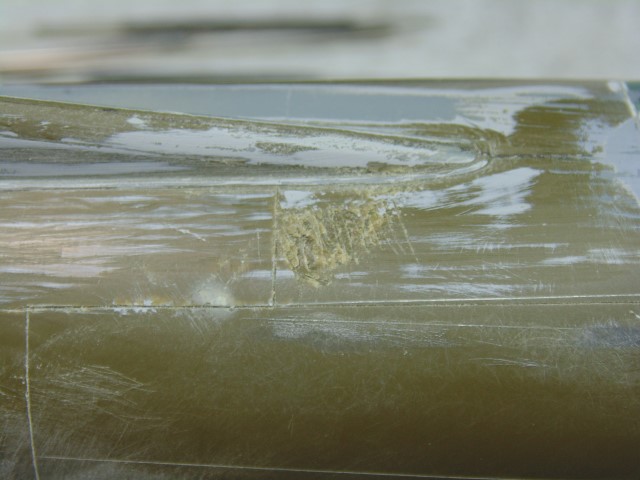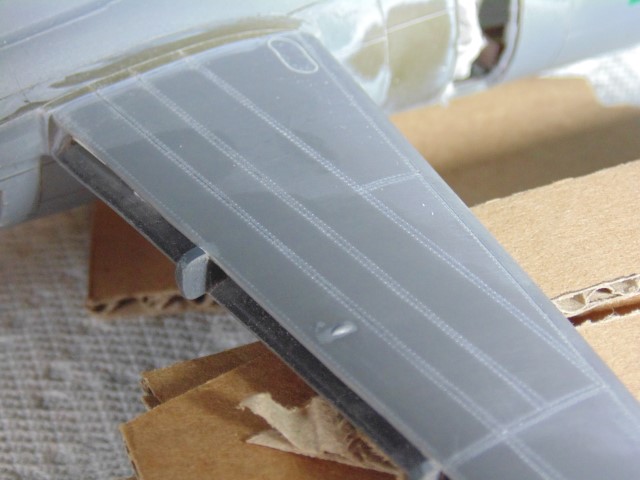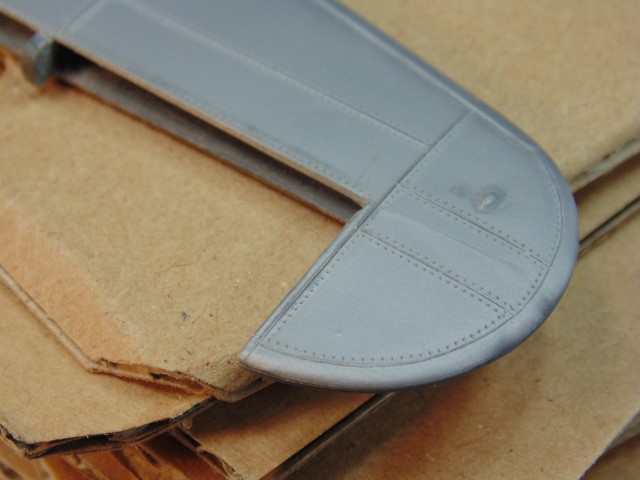PROP DEPARTMENT
From the superchargers, we are moving to the propellers.
The plan is not to paint four look-alikes, but as with the engines to see what's out there in historical photos, and to replicate the real things. So, each prop will have its own special look.
In mid-1943 the propeller domes, which housed the feathering hydraulic mechanism for the prop blades, were painted black -- unlike later versions of the aircraft whose prop hubs were natural metal. Some two-part castings that held the blades were painted black; others were left in a dull, metal casting finish.
All the period pictures that follow are from the 303rd Bomb Group website, which is well worth a look at
http://www.303rdbg.com/. (The webmaster's father was the first pilot of the 303rd's famous B-17G "Thunderbird.")
See
http://www.303rdbg.com/thunderbird/index.html.So, let's look at some of the props H.G. will be replicating.
We'll start with one of the real props from "Luscious Lady," on the #3 engine.

Notice the bare metal prop hub and the painted dome with a natural metal bolt and depression at the front. Note also the partially worn-off Hamilton Standard logo on the bottom blade and the discoloration on the blade itself, as well as the relatively narrow yellow prop blade tips. You can also see a hint of wear on the leading edge of the upper right blade near the hub.
Here are two other views of #3 prop offering different details (assuming it's the same one, which I think it is.)

The wear on the leading edge in the above photo is quite noticeable.
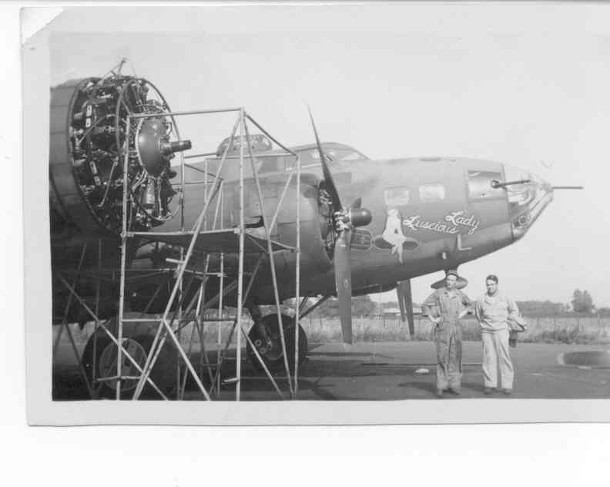
The engine maintenance picture above shows no prop on #4 engine, so we've elected to install an almost factory-fresh one. Here's a (nearly?) new prop on the 303rd's signature ship, "Hell's Angels," on 10 October 1943.

Note the factory stenciling perpendicular to the blade edge on the bottom blade.

The bare metal edges on the outer blades' leading and trailing edges, together with the darker leading edges in the photos above of "Hell's Angels" and "Jersey Bounce Jr." are a design curiosity. H.G. will replicate this, but we'll have to do some more research to figure out what's going on here from a propeller design standpoint.
Karl, do you know what the story is on this?
H.G. will do one prop with a paint-worn dome. He'll replicate this one.
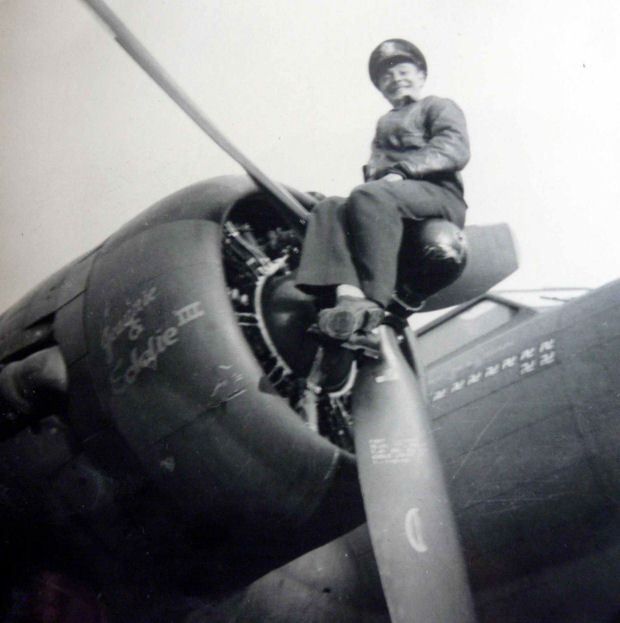
Again, note the badly worn Ham. Std. logo. BTW, you couldn't pay me to pose on a prop hub as this gent is, especially at my advanced age. (Older but wiser?)
One thing that's not in evidence in any of these 1943 pictures are blade stencils that run
parallel to the blade edges, so you won't see anything like that on this build.
The next post will feature the beginning of H.G.'s work on the props we are using.









